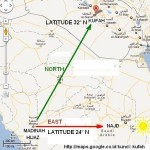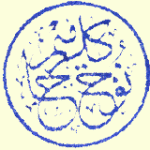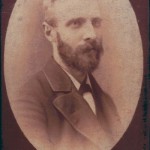-
1099-1999 Remembering the Tragedy of Al-Quds
By Kerim Fenari
Categories : History, Inter-Faith
By the solar calendar, July 1999 represents the nine hundredth anniversary of the Crusader sack of Jerusalem. The event has been passed over in near-silence by the West, but for Muslims it vividly recalls a pain that will never be forgotten. To commemorate this most appalling event in the history of Islam, we publish on this site several evocative illustrations by the French engraver Gustave Dore, published in 1877 to great critical acclaim.
The Crusading armies which had flocked to Pope Urban’s call for a holy war against Islam had assembled on the seventh of June beneath the city walls. The swords of these wild, zealous men already ‘knew the taste of Saracen blood’, as a friar wrote. Many of the Crusaders had eaten Turkish children on their long and violent march through Anatolia. All were fired with the love of the Church, and of the Holy Spirit which drove the minds of the bishops who urged them on.
Jerusalem was well-defended, and copiously stocked with food and water. Its commandant, Iftikhar al-Dawla, had ensured that the city walls were in good repair, and had succeeded in blocking or poisoning the wells beyond, forcing the Christian armies to rely on a water supply several miles distant. A Muslim army had already set out from Egypt to relieve the city. Weighing up these factors, the Crusaders, under Godefroy, realised that a long siege was out of the question. Their only chance of success lay in launching an immediate, all-out assault.
This view was strengthened by a miraculous vision received by a priest, Peter Desiderius, who was instructed by a heavenly voice to lead the Christian hosts in a barefoot pilgrimage around the city walls, all the time repenting of their sins and calling upon Jesus to forgive them and grant them victory. The pilgrimage ended at the Mount of Olives, where the Crusaders listened to sermons from Peter the Hermit and other venerable members of the accompanying clergy. The sermons fired the Christians with excitement and an overpowering longing for the fight
During the night of the 13th July, the Christians pushed three great siege-towers towards the walls. The Muslims fought back with Greek fire and stones from catapults, and casualties were heavy on each side. By midday on the 14th, one siege tower under Godefroy himself reached the wall, and a bridge was thrown across to the battlements. A great press of Christians forced its way across, and a detachment was sent to open the nearest city gate, the Gate of the Column. Bursting through the gate, thousands of Crusaders poured into the streets of the city, singing hymns, with the Muslim population fleeing before them to the Aqsa Mosque, where they hoped to make a final stand.
Al-Aqsa was packed with fearful refugees; there was little standing-room even on its roof. Crusading knights under Tancred broke into the Dome of the Rock, and desecrated it, slaughtering all they found there. Then the Christian masses surrounded al-Aqsa itself, clamouring for the death of the Muslims inside. The Muslims had had no time to fortify the mosque, and within hours the flag of Tancred flew from the roof of the bloodied building, the third holiest of Islam.
In the narrow city streets the confusion on the hot July day was absolute. Men, women and children ran screaming from the triumphant Crusader swordsmen. Some hid in their homes, only to be found and put to death. The garrison commander, Iftikhar al-Dawla, who was surrounded in the Tower of David, the last redoubt of the defence, surrendered on condition that he and those soldiers who survived with him be allowed to depart safely.
Iftikhar and his men were the only Muslims to survive. Historians calculate that ninety thousand Muslims, and also the entire Jewish population of the city, were immolated by the joyful Crusader army. The city which had been captured peacefully by the Caliph Umar four centuries before, and which had been home to people of all religions, now swam deep in blood. Priests and friars later wrote exultantly of the scene, which they called a ‘marvellous judgement of God’. Muslim and Jewish blood, they noted happily, had ‘flowed up to the knees’ of the Crusaders’ horses.
With every Muslim life extinguished, the Crusading priests and knights processed solemnly to the Church of the Holy Sepulchre, where they sang hymns of thanksgiving. On receiving the joyful news, the bells of all Christendom pealed for hours.
Jerusalem became a Christian city and remained so until 1187, when Salah al-Din recovered it for Islam. His tolerance and magnanimity towards its people of all faiths became legendary, and recalled the generous spirit of the early days of Islam, and of Umar himself. But the memory of the Crusaders’ bloodlust has not been forgotten by the Muslim people of Jerusalem, or of the Islamic world. The militant intolerance of pre-modern Christianity towards the presence of unbelievers, which survived unchallenged until the Enlightenment, and which resulted in massacres no less apocalyptic in the Americas, Africa, Siberia, and every other place where Christian armies penetrated, is symbolised for Muslims by the bloodbath in one of the holiest cities of Islam, a crime which is without parallel in the history of religion.
No other event has done more to influence relations between Christianity and Islam, and to colour the mutual perception of these two faiths.
May Allah grant rest and light to the martyrs of al-Quds al-Sharif in all ages, forgive them their shortcomings, and secure for them the Intercession of the beloved Prophet, upon him be peace, on the last day.






